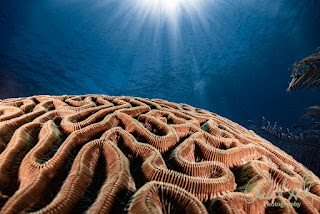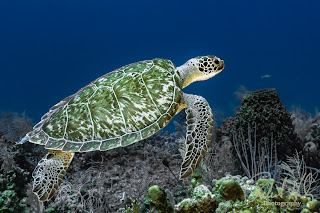Balancing Light and Shadow in Underwater Wreck Photography
Tips for Capturing the Haunting Beauty of Shipwrecks with Light Control
Exploring an underwater shipwreck is a unique and captivating experience that reveals stories of history, tragedy, and the mysteries of the ocean’s hidden world. However, capturing the haunting beauty of these wrecks through photography presents challenges. The interplay of light and shadow is crucial in underwater wreck photography, as it can either enhance the eerie charm or detract from the scene’s impact. Let’s explore some tips and techniques for effectively managing light and shadow to showcase shipwrecks in their full, ghostly glory.
Understanding the Wreck Environment
Shipwrecks are often large structures with many nooks, crannies, and cavernous interiors. These environments present a unique challenge when it comes to lighting. Natural light filters down from the surface, creating a beautiful but uneven glow over the wreck. As you go deeper, you lose more light, so you need to rely heavily on artificial light sources such as strobes or video lights. However, be cautious! Using too much artificial light can make the scene look flat and wash out its mysterious appeal.
Natural Light: A Powerful Ally
Tip #1: Use Ambient Light When Possible
When diving in relatively shallow waters, up to 40-60 feet, you can significantly improve your wreck photography by using natural light. Even in deeper water, from 60 to 110 feet (with good clarity), ambient light can create dramatic shadows and emphasize the textures of the wreck’s surfaces. For the best results, try to capture the wreck mid-day when the sun is high, providing the most light. Position yourself to use the natural sunlight streaming down to illuminate parts of the wreck, creating a striking contrast between the illuminated areas and the shadows.
Experiment with different angles and positions to observe how the light interacts with the wreck’s surfaces. Look for beams of sunlight filtering through gaps in the wreckage.
Relying solely on natural light in deep or murky waters may cause the colors to fade quickly, leading to a blue or green cast over the entire image. However, you can make significant adjustments to the image during post-processing to correct for any color casts.
The Role of Artificial Light
Tip #2: Use Strobes and Video Lights Sparingly
Remember this information: When taking photos of deep wrecks, it’s important to use strobes and video lights to bring out the colors and details hidden in the shadows. It’s crucial to be subtle with the lighting to maintain the wrecks’ moody ambiance. Here are some tips to follow:
Do: Use a diffuser on your strobes to soften the light and avoid harsh shadows. Position your lights off-camera at a slight angle to enhance the wreck’s textures without overexposing the foreground.
Don’t: Point your strobes or video lights directly at the subject. Direct lighting can create glare, flatten the image, and result in “blowouts,” where parts of the image become overly bright and lose detail.
Tip #3: Emphasize the Wreck’s Features with Lighting
The beauty of a wreck often lies in its details—rusted railings, coral-encrusted hulls, and haunting doorways leading into the unknown. To highlight these features, use a technique called “snooting.” This involves attaching a narrow beam of light to your strobe or video light to spotlight specific areas, creating dramatic contrast between light and dark.
Do: Experiment with snoots to focus light on exciting features like a porthole, a ship’s bell, or coral growths. The directed beam of light will make these elements stand out against the surrounding shadows, adding depth and drama to your composition.
Don’t: Overuse this technique. Spotlighting can be incredibly effective but loses its impact if every photo is treated the same way.
Working with Shadows
Tip #4: Embrace the Darkness
Shadows are crucial in underwater wreck photography. They add mystery, depth, and context to your images, suggesting hidden spaces and creating an ominous atmosphere. Instead of trying to eliminate shadows, learn to work with them. By positioning your light sources carefully, you can emphasize the wreck’s form and create a more compelling visual narrative.
Dos: Compose your shots to include areas of darkness around the illuminated subject. This creates a frame and draws the viewer’s eye towards the focal point, enhancing the wreck’s eerie allure.
Don’ts: Try to light every part of the scene. Over-lighting removes the element of mystery and flattens the image, making the wreck look more like a pile of rubble than a piece of underwater history.
Fine-Tuning with Post-Processing
Tip #5: Enhance Light and Shadow in Post-Processing
Remember the following tips for enhancing underwater images in post-processing:
Balancing light and shadow continues even underwater. After capturing the image, you can use Adobe Lightroom to adjust the highlights, shadows, and contrast to achieve the desired mood. You can also use the ‘Brush’ tool to selectively lighten or darken specific parts of the image, simulating natural light interaction with the wreck’s structure.
Dos:
- Use the ‘Dehaze’ slider sparingly to reduce water haze and enhance contrast and detail in the wreck.
- Adjust the ‘Highlights’ and ‘Shadows’ sliders to control the balance of light and dark areas, emphasizing the atmosphere.
Don’ts: Avoid over-processing your images by pushing the sliders to their limits, as this can make the result look artificial. Keep the adjustments subtle to preserve the wreck’s natural beauty.
Black & White vs. Color: The Mood and Contrast of
Wreck Photography
When capturing underwater wreck photography, the decision to use black and white (B&W) or color can significantly influence your images' emotional tone and storytelling. Each option offers distinct advantages and characteristics, allowing you to convey different narratives through your photography.
Photographing in Color
Color photography captures the vividness of underwater wrecks, highlighting details like rusting metals, vibrant coral growths, and the play of light filtering through the water. Proper light control is essential when shooting in color to bring out the reds, oranges, and yellows that often get lost as you go deeper. Artificial lighting, like strobes, can help recover these colors, adding life to the scene.
Advantages of Color:
- Natural
Representation: Offers a more realistic portrayal of the wreck,
showcasing its current state and the marine life surrounding it.
- Detail
Emphasis: This emphasizes the intricate textures of coral, algae, and marine
growth, adding layers to your shot.
- Mood
Variety: The interplay of warm and cool colors provides flexibility in
depicting different moods, from the eerie blues of deep water to the
sunlit allure of shallower wrecks.
Disadvantages of Color:
- Light-Dependent:
Color capture becomes challenging in deeper or murky waters.
- Risk
of Over-saturation: Over-processing can lead to unnatural results,
reducing the scene's subtlety.
Photographing in Black & White (B&W)
Black and white photography is known for its ability to accentuate light and shadow, creating striking contrasts and highlighting textures. This classic technique can elevate an ordinary scene, infusing it with a timeless and sometimes haunting ambiance.
Advantages of B&W:
- Emphasizes
Contrast: Highlights stark contrasts and enhances textures, bringing
out the structural details of the wreck.
- Mood and Drama: This evokes a sense of history and mystery, perfectly aligning with the ghostly nature of shipwrecks.
- Simplifies
Composition: Directs the viewer’s attention to shapes, patterns, and
tones, creating a striking impact.
Disadvantages of B&W:
- Loss
of Detail: Unique features like colorful coral or marine life may lose
their impact in monochrome.
- Monotone
Risk: Requires careful lighting and contrast control to avoid a
flat, lifeless image.
What B&W Does to the Image:
B&W enhances the interplay of light and shadow, focusing on texture and
form. It creates a dramatic scene, often amplifying the wreck’s eerie, ancient
aura. Shadows deepen, mid-tones gain a velvety quality, and the image has
a poetic, timeless feel.
Do: Choose B&W to convey mood or when colors
don’t add value to the composition.
Don’t: Default to B&W just because the colors turned out poorly;
make an intentional decision based on the narrative you wish to tell.
Final Thoughts
Balancing light and shadow in underwater wreck photography
is an art that requires patience, practice, and a keen eye. A shipwreck’s haunting beauty lies in its contrast—the interplay of light revealing details
while shadows whisper secrets. By mastering lighting techniques and deciding
between color and B&W, you’ll capture the true essence of these underwater
giants, preserving their mystery in every shot.
"Prepare your equipment, set up your lighting, and venture into the mysterious world of underwater wrecks. 📸 By carefully balancing light and shadow and using your creativity, you can capture stunning photographs that go beyond the ordinary."
Stay Connected
Follow my blog for more tips and tutorials on underwater photography. Let's dive deeper into the art and craft of capturing the marine world!
Subscribe to my blog for more tips and tutorials on underwater photography. Don't forget to share your processed photos on social media using the hashtag #RobertHerbPhotography. I look forward to reviewing your results.
New Online Training Program
I am excited to announce that I am creating an online training program to teach underwater hobbyists and enthusiasts how to enhance their photos using Adobe Lightroom. If you are interested in this training or need more information, please go to (Underwater Photo Training) or contact me at bob@robertherb.com to express your interest and to be notified about the details and start date of the classes.
Stay tuned and "Follow" for upcoming blogs on underwater photography tips and tricks for more in-depth insights. Please leave your comments and suggestions. Enjoy your diving and shooting experience!
I am eagerly anticipating your valuable feedback and suggestions.
Sincerely,
Bob Herb
|
|
.jpg)




Comments
Post a Comment
Please let me know your comments.